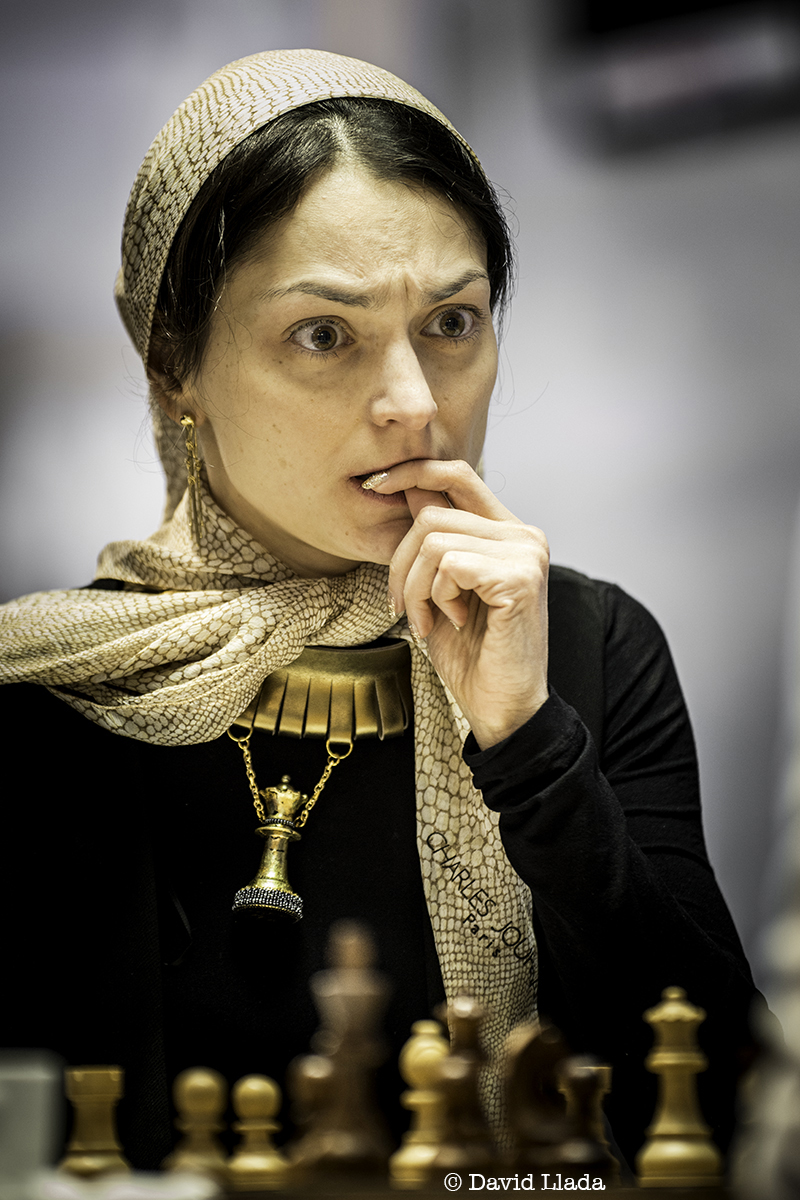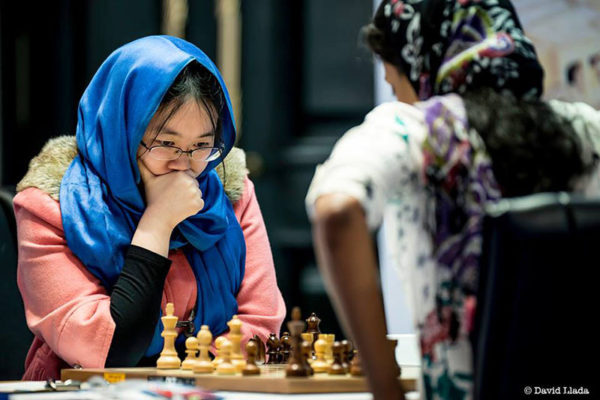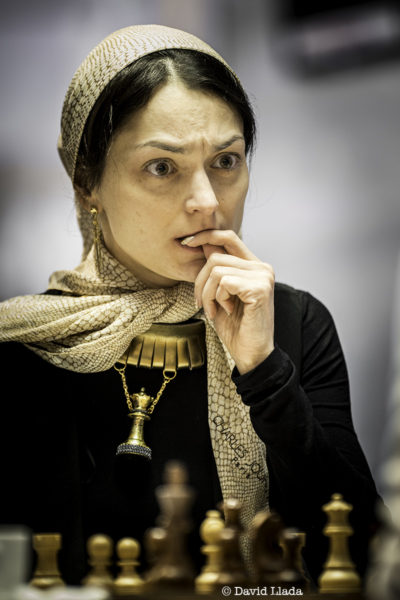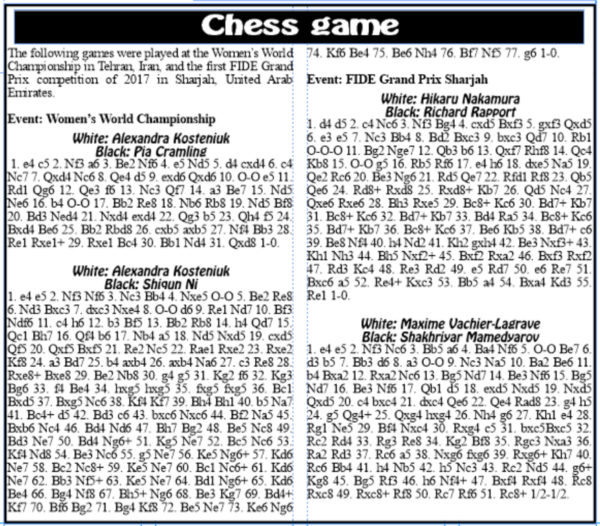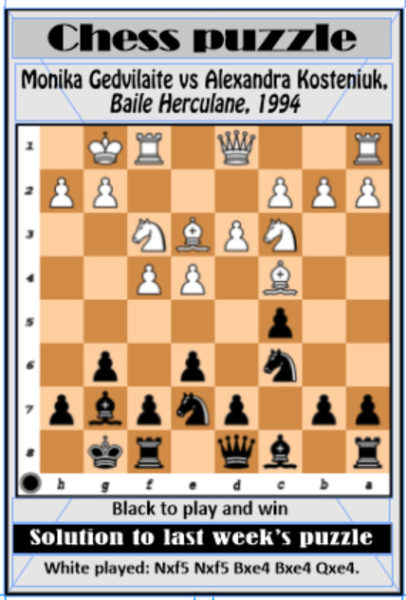Four nations, China, India, Russia and Ukraine, chess behemoths of the 21st century that impacted the world in their distinctive ways, have qualified to contest the semi-final of the elite Women’s World Championship in Tehran, Iran. The qualifiers, all grandmasters, are Tan Zhongyi, 2502 (China), Harika Dronavalli, 2539 (India), Alexandra Kosteniuk, 2549 (Russia) and Anna Muzychuk, 2558 (Ukraine). Zhongyi will oppose Dronavalli, 
Zhongyi dismissed Ju Wenjun, her team mate and the highest ranked competitor of the competition, and Padmini Rout of India, Dronavalli’s team mate, to reach the difficult semi-final stage of the Championship. Each of the other semi-finalists played worthwhile opponents. Kosteniuk stopped the fairy-tale rise of the 19-year-old Ni Shiquin who had successfully wended her way into the competitive quarter-finals. To that point, Shiquin had played unbeaten, eliminating a few notable candidates for the title.
The first classical games of the two semi-final matches have been completed. Zhongyi scored a win over Dronavalli with the white pieces, and Muzychuk did the same to former women’s world champion Kosteniuk. In the return classical games, both Dronavalli and Kosteniuk will play the advantageous white pieces. For the classical matches, players receive 90 minutes for the first 40 moves, in addition to 30 minutes to play the remainder of the game, with a 30-second increment from move one. If a draw is reached in the classical encounter, the match goes into the tie breaks, which consist of two 25-minute games plus a 10-second increment. If draws result from the tie breaks, two 10-minute games would be played followed by two 5-minute games. If it becomes necessary, an Armageddon game would be played where White has 5 minutes to Black’s 4, but a draw counts as a win for Black.
Over in Sharjah, in the UAE, the first chess Grand Prix of 2017 is underway. After five rounds, France’s Maxime Vachier-Lagrave, 2796, holds the lead with 3.5 points. He is followed by Azerbaijan’s Shakhriyar Mamedyarov, 2766, also on 3.5 points and England’s Michael Adams, 2751, on 3.0 points. Eighteen grandmasters are competing in the nine-round Swiss tournament, which ends tomorrow.
